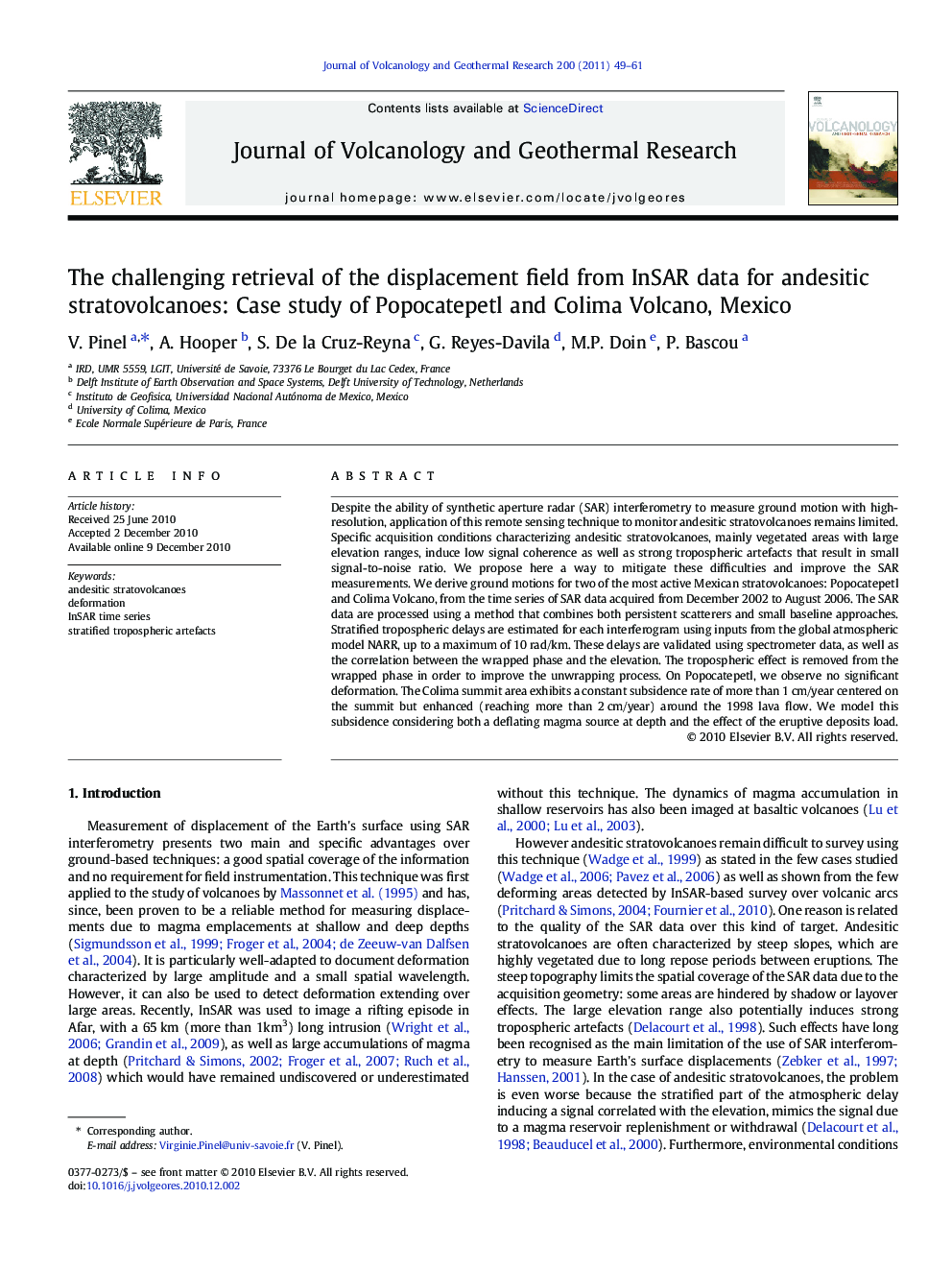| Article ID | Journal | Published Year | Pages | File Type |
|---|---|---|---|---|
| 4715127 | Journal of Volcanology and Geothermal Research | 2011 | 13 Pages |
Despite the ability of synthetic aperture radar (SAR) interferometry to measure ground motion with high-resolution, application of this remote sensing technique to monitor andesitic stratovolcanoes remains limited. Specific acquisition conditions characterizing andesitic stratovolcanoes, mainly vegetated areas with large elevation ranges, induce low signal coherence as well as strong tropospheric artefacts that result in small signal-to-noise ratio. We propose here a way to mitigate these difficulties and improve the SAR measurements. We derive ground motions for two of the most active Mexican stratovolcanoes: Popocatepetl and Colima Volcano, from the time series of SAR data acquired from December 2002 to August 2006. The SAR data are processed using a method that combines both persistent scatterers and small baseline approaches. Stratified tropospheric delays are estimated for each interferogram using inputs from the global atmospheric model NARR, up to a maximum of 10 rad/km. These delays are validated using spectrometer data, as well as the correlation between the wrapped phase and the elevation. The tropospheric effect is removed from the wrapped phase in order to improve the unwrapping process. On Popocatepetl, we observe no significant deformation. The Colima summit area exhibits a constant subsidence rate of more than 1 cm/year centered on the summit but enhanced (reaching more than 2 cm/year) around the 1998 lava flow. We model this subsidence considering both a deflating magma source at depth and the effect of the eruptive deposits load.
Research Highlights► The use of SAR data to monitor andesitic stratovolcanoes is challenging. ► Time series analysis and correction of tropospheric effects strongly increase SAR data precision. ► There was no evidence of magma injection for Popocatepetl and Colima Volcano, during the period 2003–2006. ► A summit deflation (more than 1 cm/year) is measured at Colima Volcano from 2003 to 2006.
